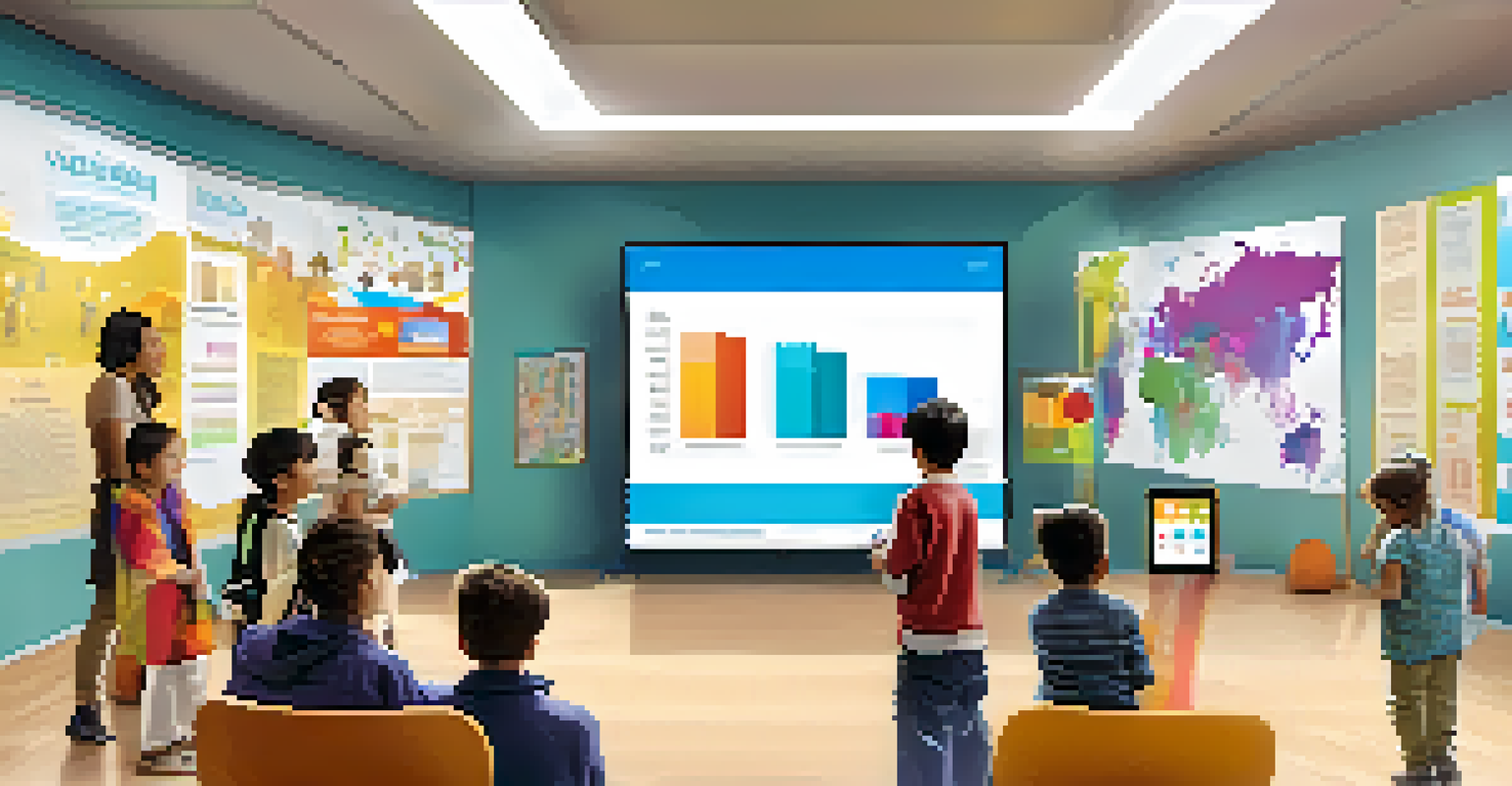Accessing Higher Education: Mobile Learning for Remote Areas

The Importance of Higher Education in Remote Areas
Higher education plays a crucial role in empowering individuals, especially in remote areas. It opens doors to better job opportunities and enhances overall community development. Unfortunately, many remote locations face significant barriers to accessing quality education, from geographic isolation to limited resources.
Education is the most powerful weapon which you can use to change the world.
In these areas, education is not just about personal growth; it's about uplifting entire communities. When individuals gain knowledge and skills, they can contribute to local economies and improve living standards. This ripple effect can transform remote regions, making higher education a vital resource.
However, traditional educational institutions often overlook these communities. By recognizing the unique challenges they face, we can begin to explore innovative solutions that bring higher education within reach for all, particularly through mobile learning platforms.
What Is Mobile Learning?
Mobile learning, or m-learning, refers to educational opportunities that can be accessed through mobile devices like smartphones and tablets. This flexibility allows learners to study at their own pace, anytime and anywhere, which is particularly beneficial for those in remote areas. Imagine being able to attend lectures or access course materials while sitting in a field or at home.

M-learning helps bridge the gap between traditional education and the needs of learners in remote locations. It uses technology to create an engaging learning environment that adapts to individual needs. This adaptability is essential for those who may have varying schedules or responsibilities, making learning more accessible.
Empowering Communities Through Education
Higher education in remote areas fosters personal and community growth, leading to improved economic conditions.
As mobile technology continues to evolve, so does the potential for education. With features like interactive content and instant feedback, mobile learning can provide a richer educational experience that encourages lifelong learning, even in the most isolated communities.
Challenges Faced by Remote Learners
Despite its advantages, mobile learning in remote areas is not without challenges. Limited internet access is a significant barrier; many rural regions still struggle with connectivity issues. This can hinder learners from accessing crucial resources or participating in live classes, creating a frustrating experience.
The beautiful thing about learning is that no one can take it away from you.
Additionally, the lack of familiarity with technology can be an obstacle. Some learners may not be well-versed in using mobile devices or navigating online platforms, which can discourage them from pursuing education. Providing adequate training and support is essential to ensure that everyone can benefit from mobile learning.
Furthermore, cultural and language differences might also play a role. Educational content must be relevant and accessible to diverse populations, which requires thoughtful consideration and adaptation. By addressing these challenges, we can make mobile learning a viable option for all learners in remote areas.
The Role of Community in Mobile Learning
Community support is vital for the success of mobile learning initiatives in remote areas. Local organizations, schools, and families can work together to create an environment that fosters learning. This collaboration not only encourages students but also raises awareness about the importance of education.
Moreover, communities can help facilitate access to technology. By establishing shared resources, such as community centers with internet access and devices, learners can benefit from a more connected and supportive environment. This approach helps break down the isolation that many remote learners face.
Mobile Learning Bridges Gaps
Mobile learning offers flexible educational opportunities, overcoming geographical barriers and catering to individual needs.
Importantly, community engagement can also lead to culturally relevant content that resonates with learners. When educational materials reflect local values and languages, students are more likely to engage and succeed. This synergy between mobile learning and community resources can create a powerful educational ecosystem.
Innovative Mobile Learning Solutions
Several innovative mobile learning solutions have emerged to address the unique needs of remote learners. For instance, offline learning apps allow students to download materials and study without needing a constant internet connection. This feature is particularly useful in areas with sporadic connectivity.
Moreover, many platforms incorporate gamification elements to enhance engagement. By turning learning into a game-like experience, students are more motivated to participate and complete their courses. This approach not only makes learning fun but also fosters a sense of community among learners.
Additionally, audio-visual content can cater to different learning styles, making education more inclusive. By offering a variety of formats, mobile learning platforms can help ensure that all learners find a method that works best for them, ultimately leading to higher retention rates and better outcomes.
Success Stories: Mobile Learning in Action
Numerous success stories highlight the impact of mobile learning in remote areas. For example, programs in sub-Saharan Africa have successfully equipped students with smartphones preloaded with educational content, resulting in improved literacy rates and academic performance. These initiatives demonstrate how technology can transcend barriers and provide quality education.
Another inspiring example comes from rural India, where mobile learning initiatives have empowered young women to pursue higher education. By providing access to online courses and resources, these programs have given women the tools they need to break free from traditional roles and build successful careers.
Community Support Enhances Learning
Engaging local communities is essential for successful mobile learning initiatives, providing resources and culturally relevant content.
These stories not only showcase the potential of mobile learning but also inspire further innovation and investment in education for remote areas. As more success stories emerge, they serve as a reminder that with the right tools and support, education can reach even the most underserved populations.
The Future of Mobile Learning in Higher Education
The future of mobile learning in higher education looks promising, especially for remote areas. As technology continues to advance, we can expect even more sophisticated tools that enhance learning experiences. Virtual reality, for example, has the potential to provide immersive learning environments that were once unimaginable.
Furthermore, the integration of artificial intelligence can personalize learning pathways, ensuring that students receive education tailored to their individual needs. This level of customization can significantly improve engagement and retention, making higher education more accessible than ever before.

Ultimately, the goal is to create an educational landscape where everyone, regardless of location, has the opportunity to learn and grow. By prioritizing mobile learning initiatives and investing in technology, we can help build a brighter future for remote learners, paving the way for a more equitable educational system.